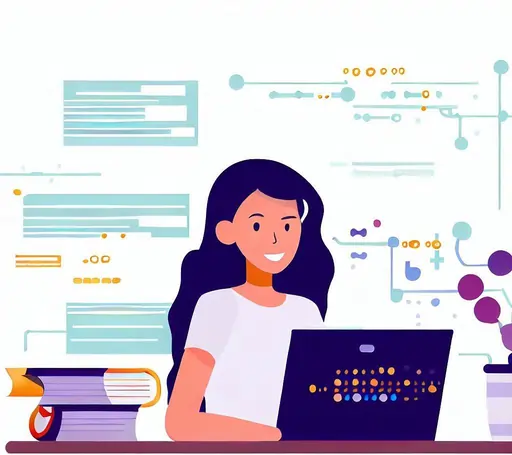8 Most Important Kinds of R Programming Assignments Used in Teaching at Universities


Additionally, machine learning is emphasized in university programming assignments using R. Using R's machine learning libraries, students explore algorithms such as linear regression, decision trees, and clustering. Students can create predictive models and assess their performance through these assignments. Additionally, a key component of R programming assignments is statistical modeling. Students are taught how to use statistical methods like regression analysis and hypothesis testing to infer patterns and draw conclusions from data. These tasks help students develop their capacity for data-driven decision-making and result interpretation. Web scraping, which involves gathering information from websites, and text mining, which entails analyzing text data using R's natural language processing capabilities, are two additional types of R programming assignments. Assignments for time series analysis, spatial data analysis, and simulation are also frequent, exposing students to a range of R's diverse applications in various domains. To excel in your R Programming skills, practice regularly, participate in coding challenges, and explore advanced concepts to deepen your understanding of the language.
- Assignments for Manipulating Data:
- Work on Data Visualization:
- Assignments for Statistical Analysis:
- Tasks Involving Machine Learning:
- Simulation-Based Homework:
- Web Scraping Homework:
- Tasks for Package Development:
- Data Science Initiatives:
Data manipulation assignments are an essential part of learning R programming because they give students the knowledge and abilities to handle and transform datasets efficiently. R offers a wide range of packages and functions that let students effectively work with data. In these assignments, subletting, merging, reshaping, and aggregating data are frequent tasks.
Students often use real-world datasets for their data manipulation assignments, giving them the chance to practice handling various complex data structures. They are taught how to combine data from various sources, extract specific subsets of data based on predetermined criteria, reshape data from wide to long format or vice versa, and summarize data using various aggregation techniques.
Students gain a thorough understanding of data manipulation methods and gain proficiency using R's functions and packages to effectively clean, transform, and prepare data for further analysis by completing these assignments. This skill set is essential for real-world data analysis situations because messy data frequently needs to be carefully manipulated in order to yield valuable insights.
In R programming assignments, the emphasis is on teaching students the art of visually representing data in an engaging and educational way. There are many visualization packages available in R, with ggplot2 being one of the most popular ones. Students must produce a variety of plots, charts, and graphs for these assignments in order to effectively convey the data-driven insights.
Through data visualization assignments, students gain the knowledge necessary to select the most appropriate visualizations for the data at hand and the message they hope to convey. They learn how to customize these visualizations to improve readability and aesthetics and gain an understanding of various visualization techniques, including scatter plots, bar charts, line graphs, and heatmaps.
Additionally, students explore crucial facets of data visualization, such as color selection, labeling, annotations, and the addition of suitable scales and legends. They learn how to present information in an intuitive and visually appealing way so that viewers can more easily understand patterns, trends, and relationships.
Students develop a critical eye for design principles while honing their data visualization skills through assignments, which enables them to effectively communicate complex information and insights through visual representations.
Students gain practical experience using statistical methods and techniques to analyze data through statistical analysis assignments in R programming. With the help of R's extensive statistical packages and functions, these assignments seek to deepen students' understanding of statistical concepts and prepare them to put these concepts into practice.
Students frequently have to carry out hypothesis testing, regression analysis, ANOVA (Analysis of Variance) mean comparisons, categorical data analysis, or investigate relationships between variables using correlation and regression methods. They must interpret the findings and use the analysis to derive meaningful conclusions.
By requiring students to select the best statistical methods in accordance with the characteristics of the data and the research questions, statistical analysis assignments in R programming help students develop their critical thinking and decision-making abilities. They also give students a strong foundation in statistical inference, enabling them to make decisions based on data and come to trustworthy conclusions.
Students learn how to use R for statistical analysis through these assignments, but they also gain a deeper understanding of statistical ideas and how they are used in real-world situations in a variety of industries, including the social sciences, economics, medicine, and engineering.
The application of machine learning algorithms to analyze and model complex datasets is the main focus of machine learning assignments in R programming. Strong libraries like caret and randomForest are available in R, and they offer a variety of algorithms for jobs like regression, classification, clustering, and dimensionality reduction.
Students typically experiment with various algorithms in machine learning assignments, including linear regression, decision trees, support vector machines, k-means clustering, and principal component analysis. By dealing with missing values, scaling features, and encoding categorical variables, they learn how to preprocess data. Additionally, students learn about model evaluation, model training, hyperparameter tuning, and prediction.
Students gain a thorough understanding of the machine learning workflow by completing machine learning assignments. They learn how to choose the best algorithms for various problems, evaluate the performance of models using metrics like accuracy, precision, and recall, and examine the effects of hyperparameters on model output.
By utilizing data and algorithms, machine learning assignments give students the tools they need to address problems in the real world. These tasks sharpen their analytical abilities and equip them to make data-driven decisions in a variety of fields, including marketing, finance, healthcare, and recommendation systems.
R programming assignments that involve simulation involve creating fake data to simulate real-world situations and research intricate systems. Students can build simulations for statistical experiments, hypothesis testing, and Monte Carlo simulations using R's statistical simulation features.
Students gain experience in experiment design, data simulation using various probability distributions, and result analysis through simulation assignments. They gain understanding of concepts in probability theory like confidence intervals, sampling distributions, and random variables. By simulating data under various scenarios and assessing the statistical significance of the outcomes, students can also learn about hypothesis testing.
Students improve their comprehension of statistical ideas and gain practical experience in simulating and analyzing data by completing simulation assignments. By investigating different what-if scenarios and comprehending the implications of various assumptions, they develop critical thinking skills.
Students are given strong tools to explore complex systems, assess uncertainties, and make wise decisions through simulation assignments in R programming. In disciplines like finance, risk analysis, operations research, and optimization, these abilities are invaluable.
Extracting data from websites and manipulating it for analysis are tasks associated with web scraping in R programming. For students to scrape data from HTML pages, APIs, and other web sources, R offers libraries like rvest and httr.
Students gain knowledge of how to find relevant data on websites, extract it using R functions, and prepare the scraped data for analysis through web scraping assignments. In handling web data, cleaning it up, converting it to structured formats, and combining data from various sources, they gain experience.
Students are also introduced to the legal and moral issues surrounding web scraping through these assignments. They gain knowledge of robots.txt, terms of service, and ethical data scraping practices.
Students can use the enormous amount of data available on the web by performing web scraping tasks as part of their R programming coursework. They are able to gather real-time data, carry out market research, follow trends, and perform sentiment analysis thanks to their skill set. Web scraping expertise is in high demand across a variety of sectors, including e-commerce, finance, and social media analysis.
In R programming assignments, the goal is to teach students how to develop their own R packages. Because R is open-source, users can give back to the community by creating and disseminating their packages.
Students learn how to organize their code, create documentation, manage dependencies, and carry out unit testing through package development assignments. They gain expertise in developing classes, functions, and examples and data sets to include in their packages.
As students experiment with new functionalities or enhance existing ones, these assignments encourage creativity and innovation. By posting their packages on websites like CRAN (Comprehensive R Archive Network), they also give users the chance to contribute to the R ecosystem.
Assignments for package development in R programming foster communication and knowledge exchange within the R community. Students develop their ability to write clear, reusable code while also advancing the language. These tasks improve students' coding abilities, encourage critical thinking about software design, and position them for careers in software development in business or academia.
Data analysis, machine learning, and R programming are all integrated into data science projects as comprehensive assignments. Students are required to identify issues, gather and prepare data, use appropriate analytical techniques, and present insightful conclusions as part of these projects, which simulate real-world scenarios.
Students work through every step of the data analysis pipeline in data science projects, including data cleaning, exploratory data analysis, feature engineering, model selection, model training, evaluation, and result interpretation. Additionally, they learn how to effectively present, visualize, and report their findings.
These assignments give students a well-rounded educational experience and let them use their knowledge and skills to tackle challenging issues. Students gain understanding of the difficulties and trade-offs associated with actual data analysis projects, including handling imbalanced datasets, dealing with missing data, and choosing appropriate evaluation metrics.
R programming projects for data science encourage critical thinking, problem-solving, and teamwork. They prepare students to take on real-world data challenges and make data-driven decisions in a variety of fields, including social sciences, healthcare, finance, and marketing.
By working on data science projects, students show that they can integrate the various ideas and strategies they have learned while studying R programming, demonstrating their mastery and readiness for real-world data science applications.
Conclusion:
The assignments for R programming that are used in university instruction cover a wide range of crucial concepts and methods. These assignments give students the tools they need to succeed in the data-driven world by introducing them to data analysis, visualization, machine learning, statistical modeling, web scraping, text mining, time series analysis, spatial data analysis, and simulation.
Through data analysis assignments, students hone their skills in data cleaning, manipulation, and statistical analysis while learning to explore and extract insights from real-world datasets. They are better equipped to handle various data challenges in their future careers thanks to this practical experience.
Students are encouraged by data visualization assignments to effectively communicate insights using eye-catching charts and graphs. Students who master R's visualization libraries can present complex data in an interesting and educational way.
Assignments in machine learning give students a hands-on understanding of algorithms and how they are used in predictive modeling. This gives them the ability to create models, assess their effectiveness, and make predictions based on data.
Assignments involving statistical modeling improve students' analytical and critical thinking abilities. Students gain the ability to interpret data, draw meaningful conclusions, and make defensible decisions by using statistical techniques.
Students are also introduced to specialized fields where R's capabilities shine through assignments on web scraping, text mining, time series analysis, spatial data analysis, and simulation. Their knowledge is increased and they are exposed to different R applications in different fields thanks to these assignments.
The development of students' skills in data analysis, visualization, machine learning, and statistical modeling is largely facilitated by R programming assignments in higher education. By completing these assignments, students gain invaluable hands-on experience that will help them succeed as data scientists and analysts in the future by preparing them to handle real-world data challenges.